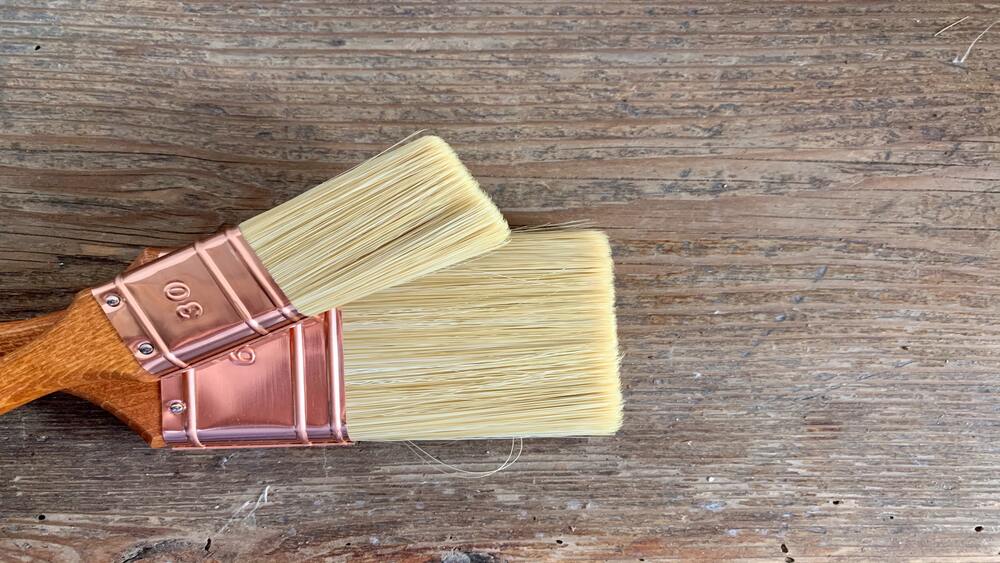Painting a room is straightforward and will save you money, here is our brief guide.
Preparation
Clear away all furniture if possible. It is advisable to lift and put away carpets, this is essential to do a professional work if the skirting boards require painting.
Fully cover anything not removed. Secure dust sheets so they will not move whilst the work is ongoing. Cover up light switches and power sockets etc. throughout their edges with masking tape and used newspaper.
Thorough preparation is necessary for a professional final job. Use a sealant gun to fill long thin gaps in all windows, doors, or along skirting boards, smooth off with a wet finger or tool. Fill bigger cracks and defects with a pre-mixed general purpose filler. Repair deep imperfections with certain layers, thick layers of filler can take days to harden. Carefully sand all woodwork, put on protective eyewear, and a face mask. Power sanders save time but generate far more dust. At last, clean thoroughly using a proper detergent and rinse. Avoid using fluffy cloths.
If knots are a problem, sand down to bare wood and apply knotting solution. Prime bare wood with a suitable primer. Seal new plasterboard before painting with emulsion.
Vacuum thoroughly before starting to paint.

Choosing the Paint
For ceilings and walls, use emulsion paint. Trade brands are increasingly accessible in retail outlets, these can have better coverage so may require fewer coats. Various finishes are available and kinds for different applications like kitchens or bathrooms which tend to have a higher gloss but are tougher wearing.
For woodwork, both oil and water-based paints are available, experts tend to favor the former for application and finish, but the gap in durability has closed. Water-based paints dry faster which is advantageous if time is at a premium. The undercoat is advised the same with so-called one-coat finishes.
Follow your paint suppliers’ guidelines to estimate the volume of paint you require.
Ceiling and Walls
All surfaces must be totally dry before starting. Open windows to assure adequate ventilation.
Paint ceilings first. Use a brush for coving (if fitted), around obstructions, along with the sides and in the corners, slightly overlap to ensure there are no gaps when you wallpaper or paint the walls. Paint rollers save time, select one recommended for the type of paint and the surface; smooth or stippled. Small platforms are worth buying from a Do It Yourself store, they are preferable to ladders. You can fit extension handles to any rollers but you need stamina and a steady hand. Remove residue paint from the roller before application, begin from the window and work away, this makes it easier to see what you have finished. Work in manageable-sized areas with the intent to join up before drying. Emulsion paint can require thinning with water, do this reluctantly to avoid ruining the paint’s capability to cover.
Make sure the paint is completely dry before deciding if a second coat is needed. Follow manufacturers’ guidelines on the time to allow between coats, noting that it may be extended in damp or cold conditions.
Paint walls similarly, begin with the window wall, working downwards from the top in vertical strokes with the roller.
It is wise to buy a shaped scraper to remove excess paint from the roller back into the paint container before washing it with cold water, it is amazing how much paint they hold.
Woodwork etc.
Give woodwork a wipe-over with a clean dry rag before starting.
Plan to paint windows as early in the day as possible to allow maximum drying time, this will help to avoid sticking. If it is not breezy, it’s worth removing the catches and stays to make the painting easier. Paint the opening panes first, working outwards from the glass. stand back and check that no strips have been missed! Use a pure bristle one-inch brush, and its edge for critical sections where it meets the glass, it is useful to have a dry rag to remove any excess paint on the glass or other surfaces before it dries.
Take away door handles before painting. Paint plain doors from the top downwards. On paneled doors, paint the panels first followed by the central horizontal and vertical areas, then, at last, the outer vertical strips. Have a care not to get too much paint in the lower areas of panels in order to avoid runs. Paint the door frame, have a care where it meets the wall, to decide what belongs to the room you are decorating, open the door, if you can see it than paint it!
Before painting the skirting, it is wise to lightly vacuum it again first. Be careful not to allow the brush to touch the floor, it will certainly pick up dust or grit. Before the paint has dried, brush out any runs.
When the undercoat is completely dry, lightly sand with fine sandpaper. It is wise to apply a further coat to heavy use areas like window sills.
Clean brushes used for oil-based paints first with the white spirit than with soap and water. Use water for cleaning brushes and rollers used for water-based paints.
